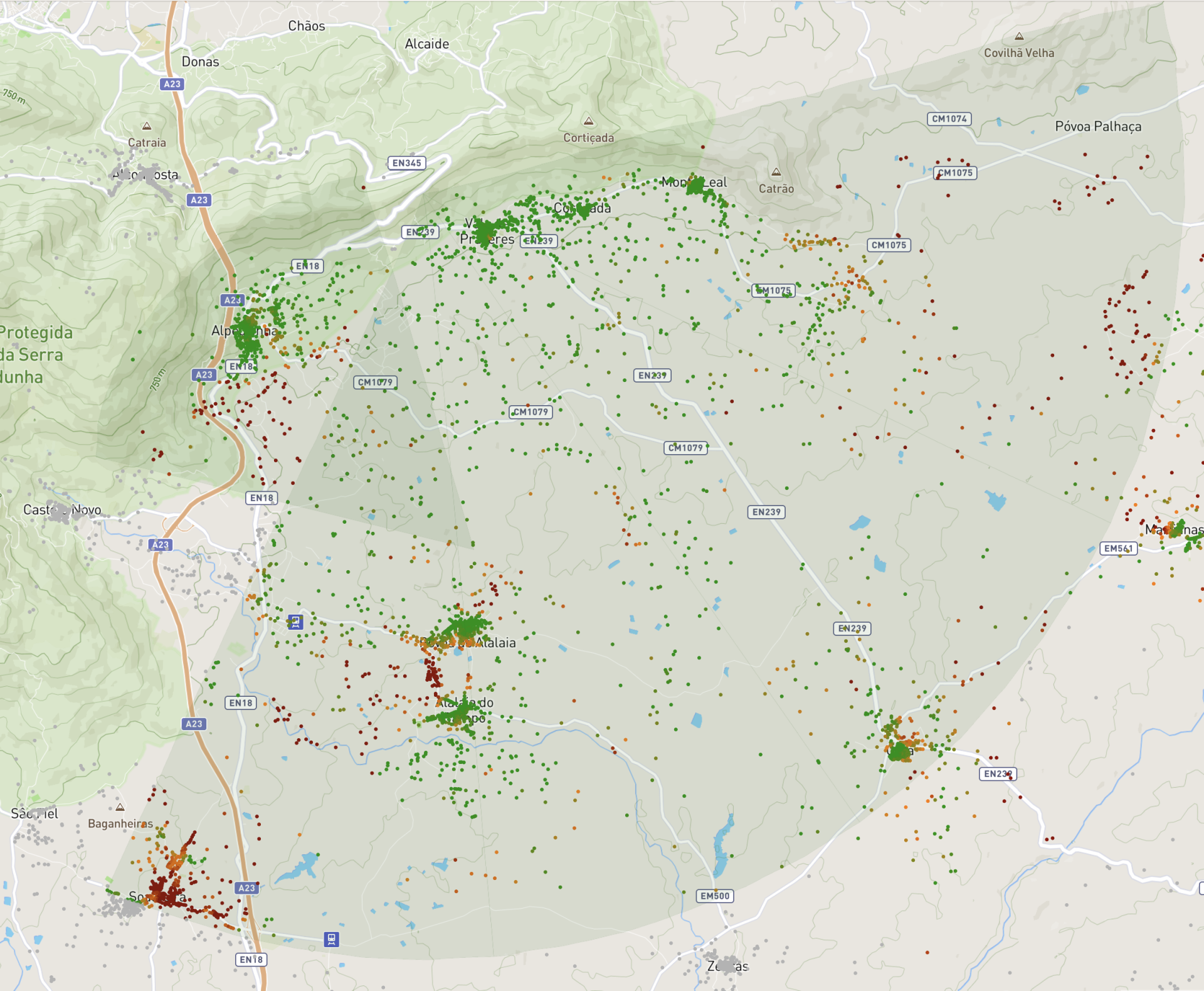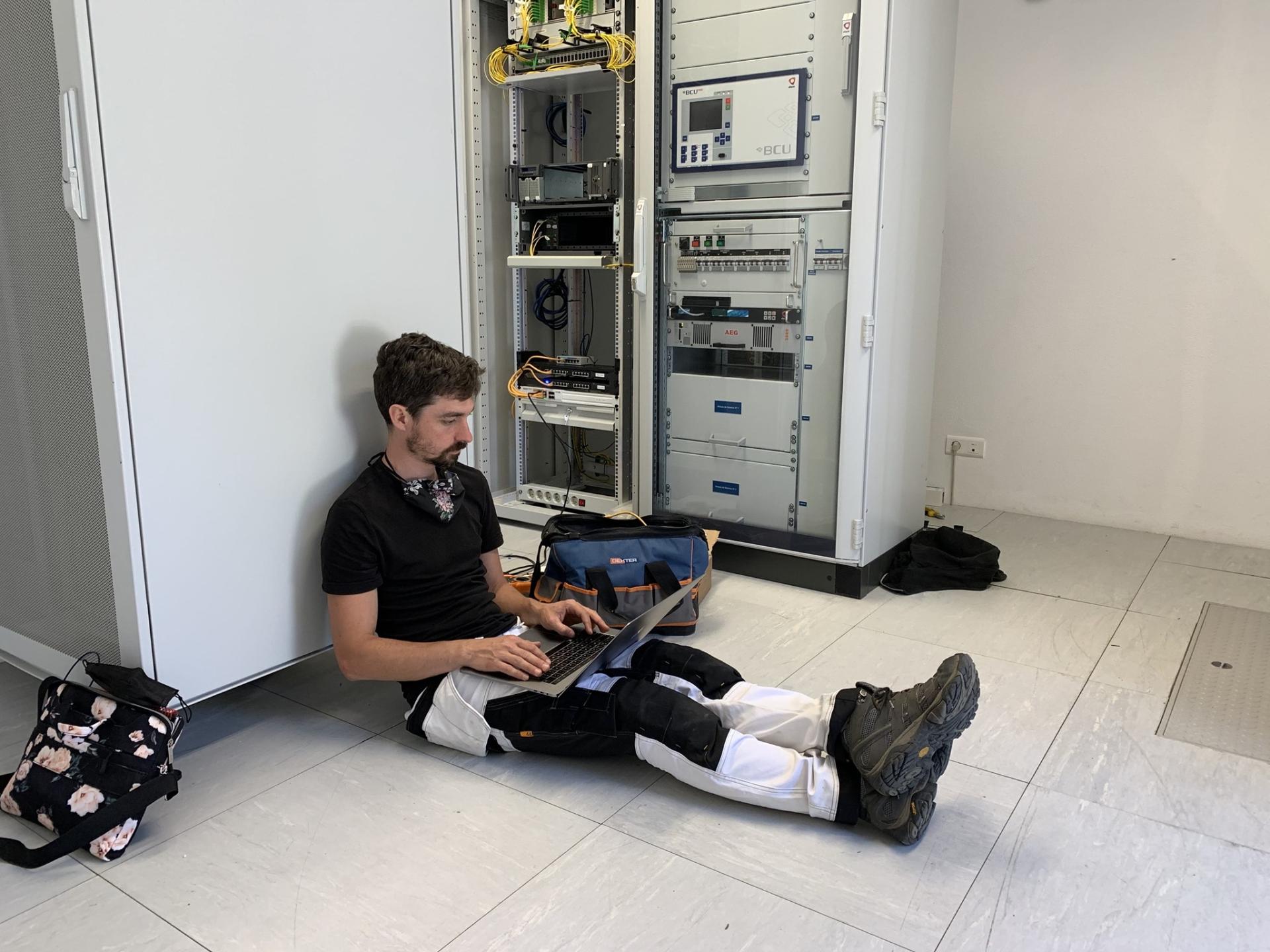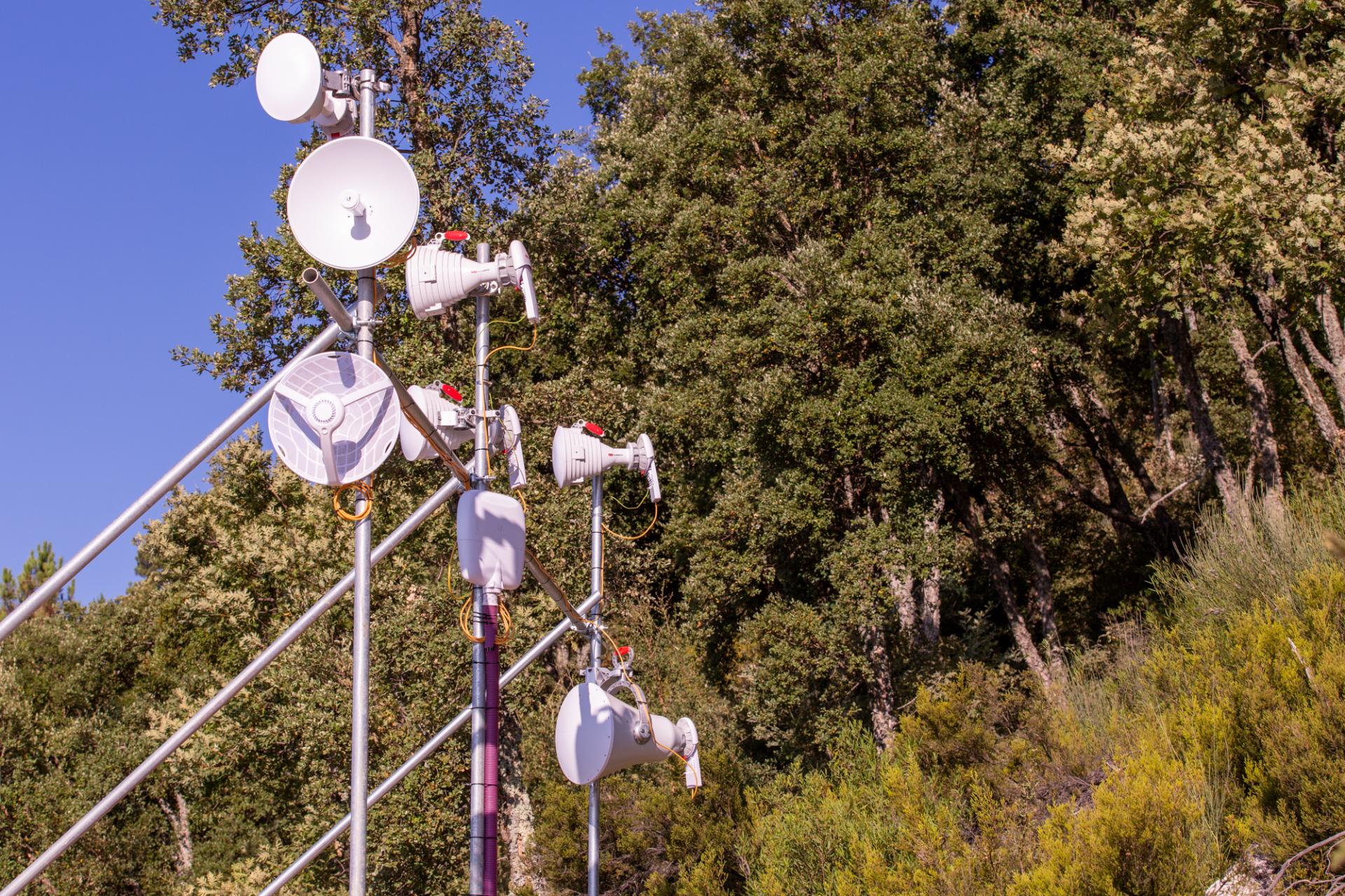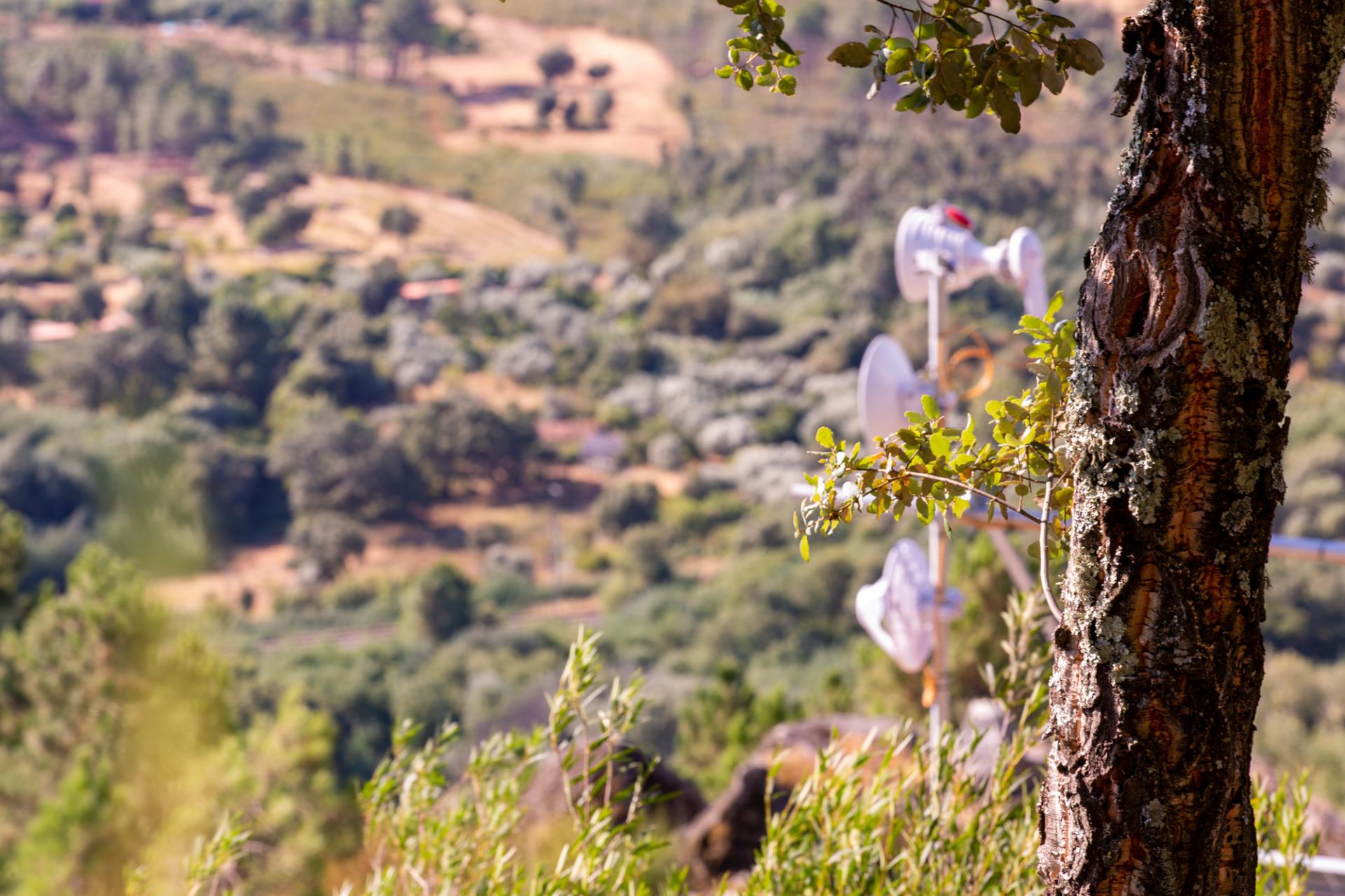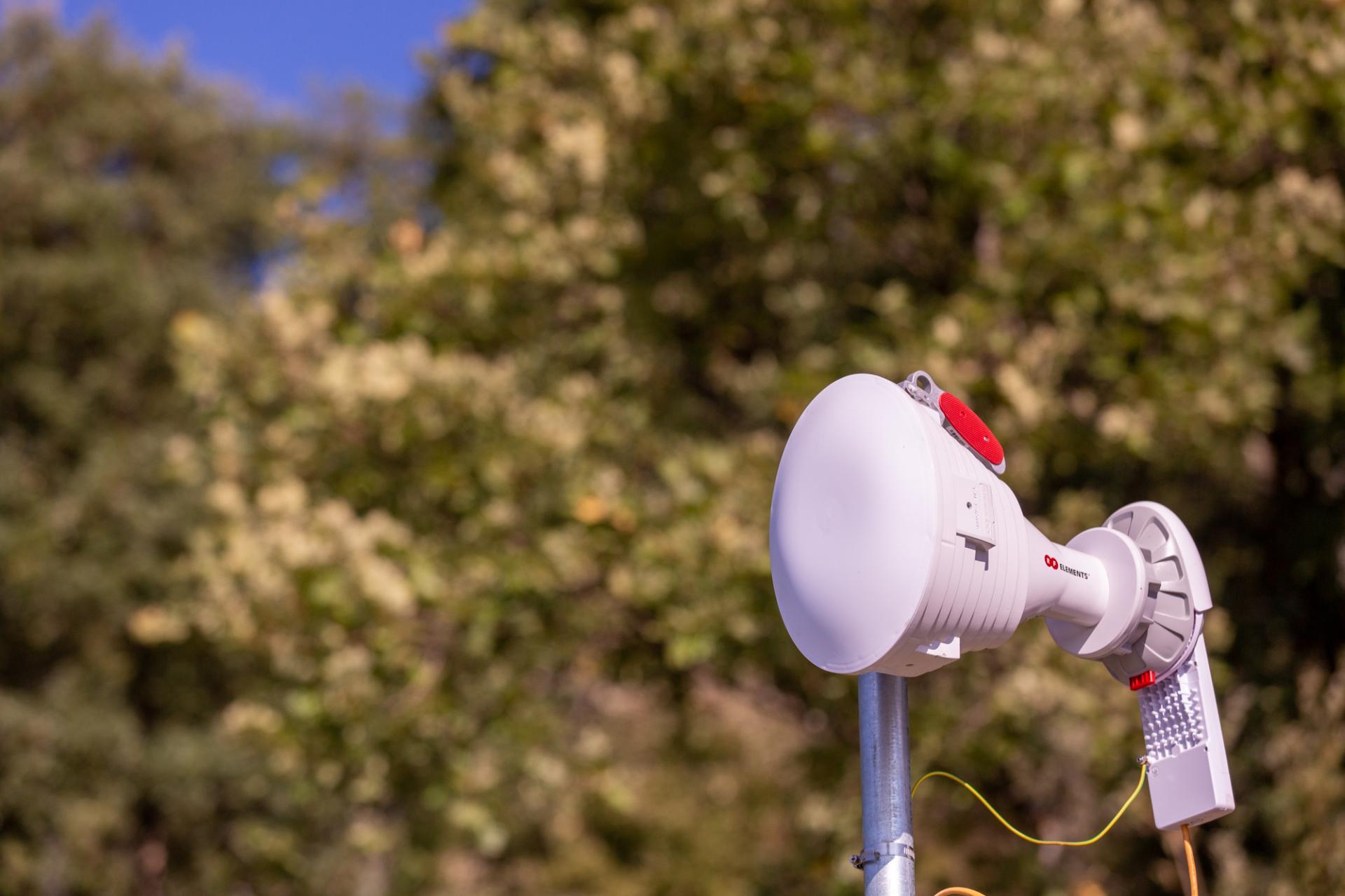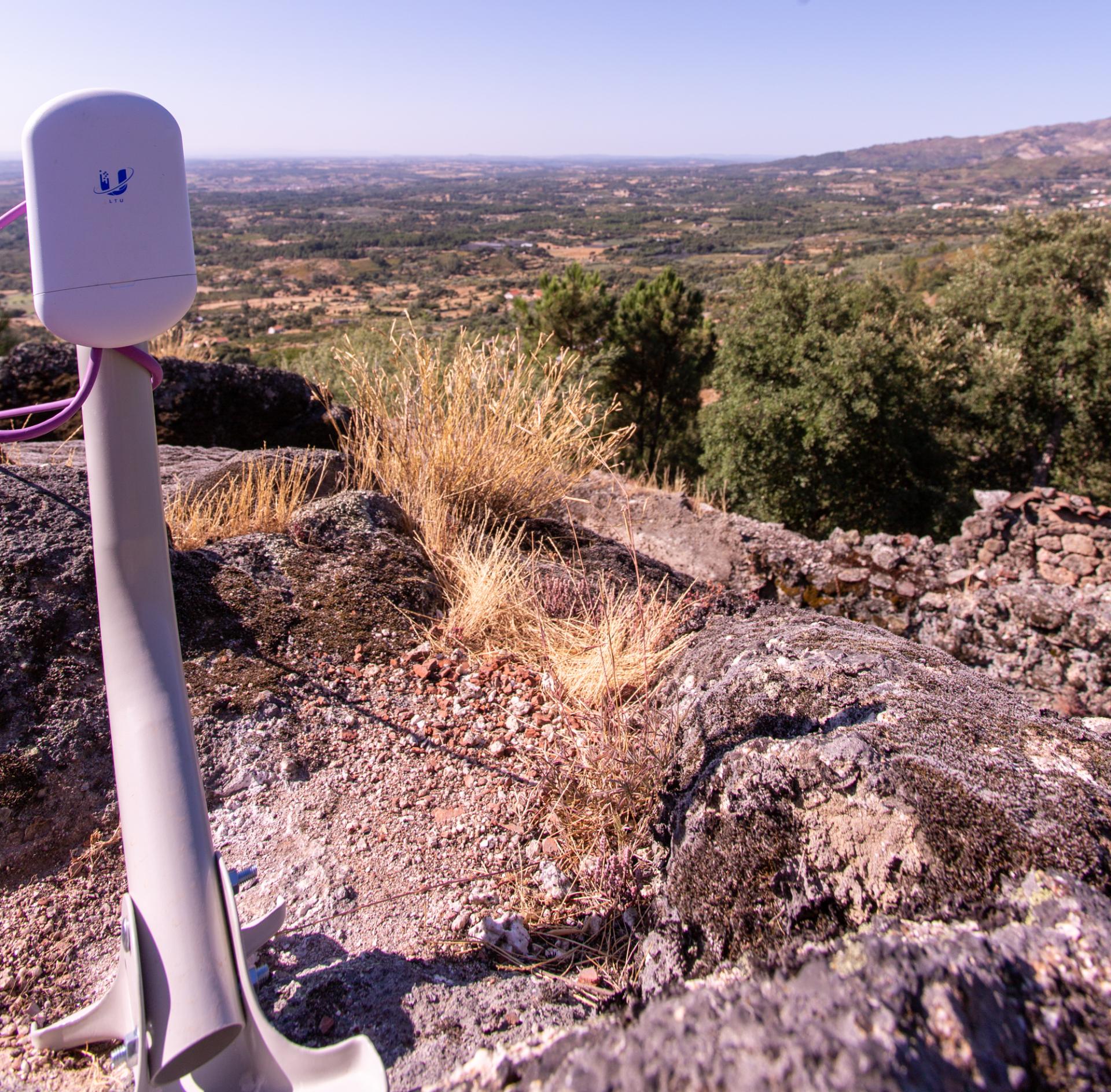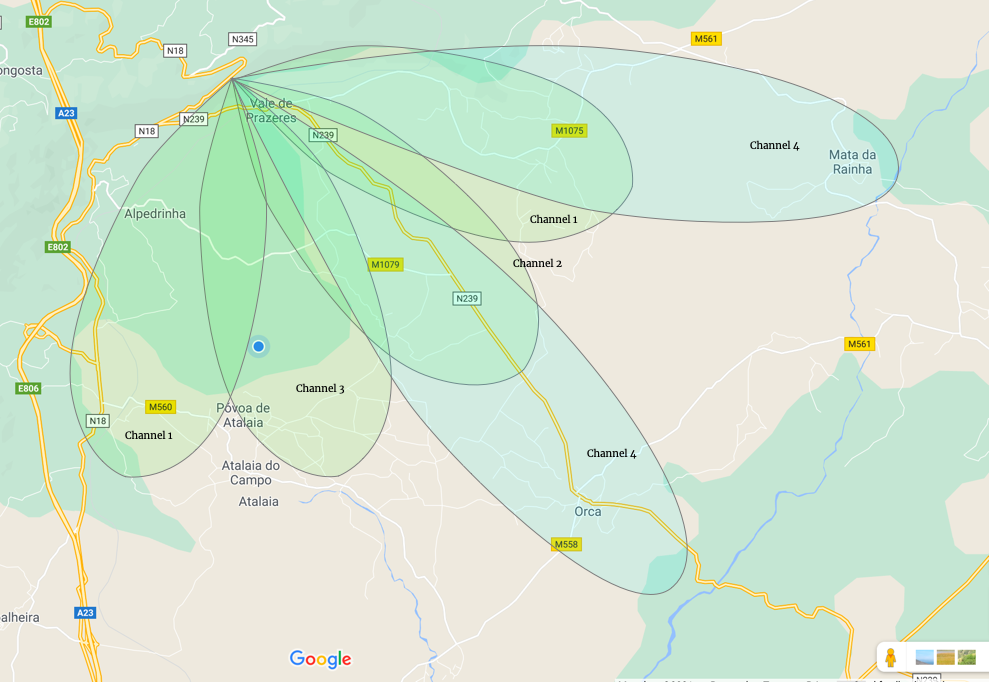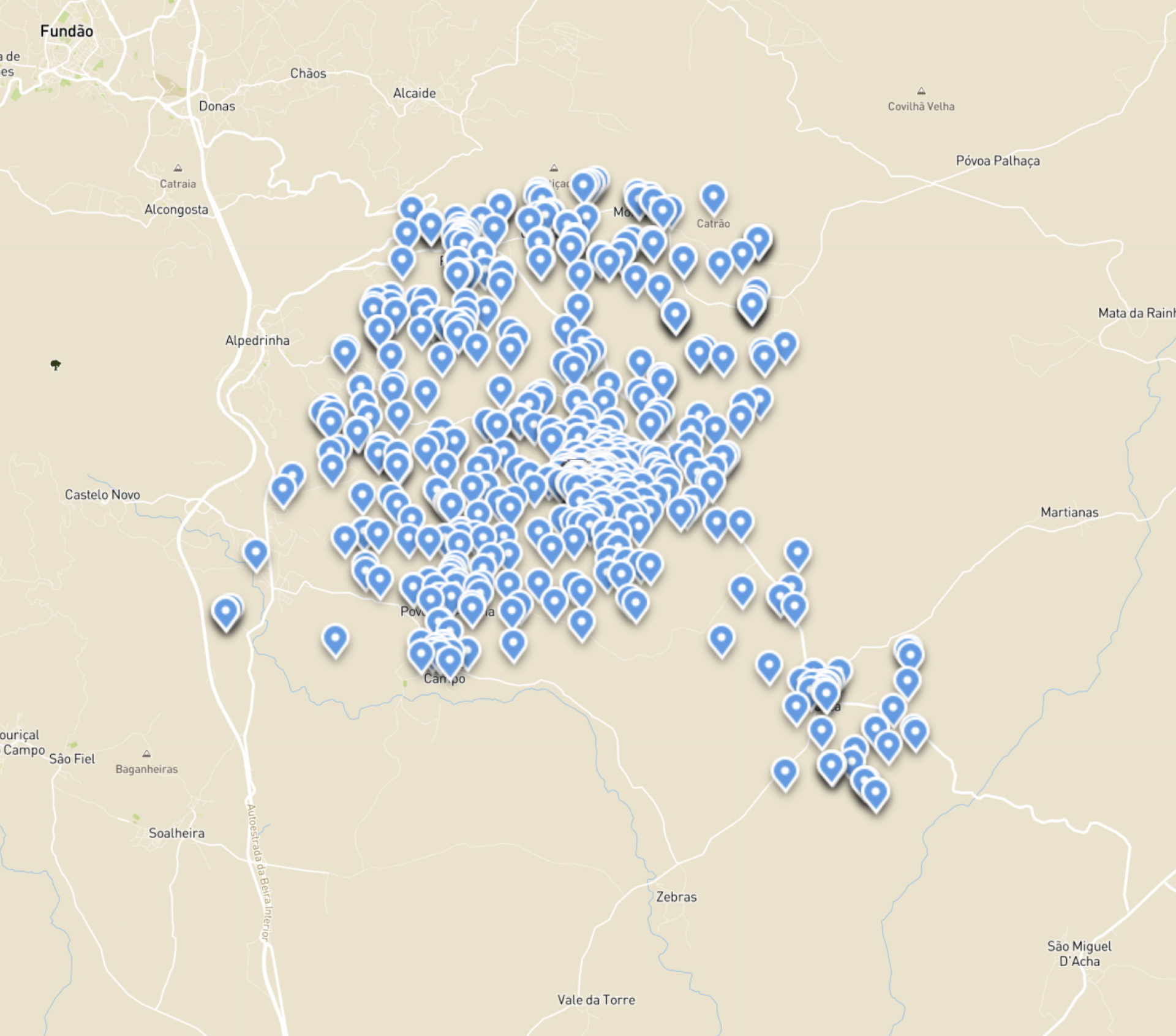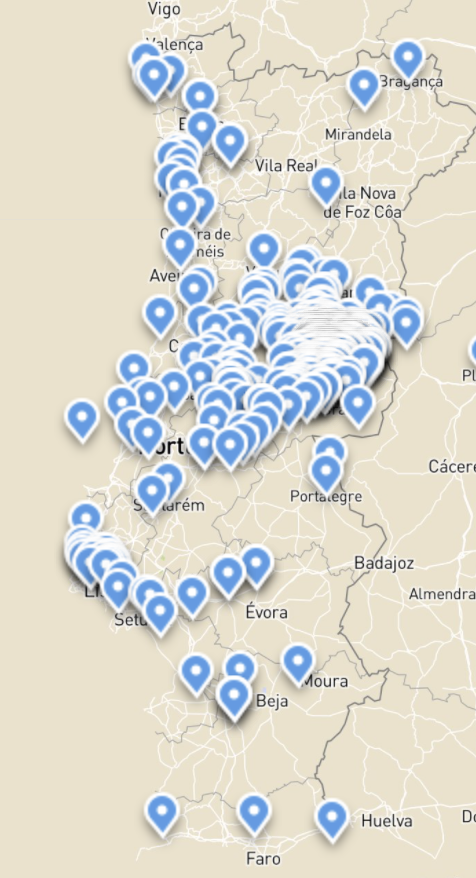Gardunha Community Broadband
Basic information
Project Title
Gardunha Community Broadband
Full project title
Gardunha Broadband Community Focused Internet
Category
Shaping a circular industrial ecosystem and supporting life-cycle thinking
Project Description
Gardunha Broadband is bringing a high-speed locally-provided innovative internet solution to the hard-to-reach areas of Central Portugal.Our mission is to bridge the digital divide.
Geographical Scope
Regional
Project Region
Cova da Beira-, Portugal
Urban or rural issues
It addresses urban-rural linkages
Physical or other transformations
It refers to other types of transformations (soft investment)
EU Programme or fund
No
Description of the project
Summary
Innovation Through Recombination
Gardunha Broadband is bringing a high-speed locally-provided innovative internet solution to the hard-to-reach areas of Central Portugal. Our mission is to contribute to a thriving economy bridging the digital divide -In isolated rural areas creating access to reliable and high-speed internet connectivity. This lack of access creates a significant digital divide, as individuals in urban areas have easier access to online resources, education, job opportunities, and government services. A business with social intent, contributing to developing a thriving rural economy and preventing rural social desertification. A business committed to creating rural jobs.
The Portuguese Recovery and Resilience agenda has identified the development of rural areas. Focusing on agriculture, tele-medicine, education, and business digitisation. Equality in the digital age is a complex issue that can be particularly pronounced in isolated rural settings Overall, the true value of providing broadband to hard-to-reach areas of Portugal extends beyond just connectivity. It touches on education, healthcare, economic development, community well-being, and environmental sustainability. These benefits contribute to a more balanced and thriving society, where all citizens have the chance to fully participate in the digital age. Improved quality broadband infrastructure can make rural areas more attractive for investment and talent retention. Businesses and professionals might choose to relocate if they have access to modern digital amenities.
Fibre only works in rural areas if heavily subsidised and is being brought at huge expence to villages but not the countryside. Our service requires no subsidy and provides high-quality internet. This is a scalable and replicable solution. It is critical to not exclude rural areas from opportunity.
We repurposed existing technology and built an entirely new infrastructure for our region. Running on Solar power.
Gardunha Broadband is bringing a high-speed locally-provided innovative internet solution to the hard-to-reach areas of Central Portugal. Our mission is to contribute to a thriving economy bridging the digital divide -In isolated rural areas creating access to reliable and high-speed internet connectivity. This lack of access creates a significant digital divide, as individuals in urban areas have easier access to online resources, education, job opportunities, and government services. A business with social intent, contributing to developing a thriving rural economy and preventing rural social desertification. A business committed to creating rural jobs.
The Portuguese Recovery and Resilience agenda has identified the development of rural areas. Focusing on agriculture, tele-medicine, education, and business digitisation. Equality in the digital age is a complex issue that can be particularly pronounced in isolated rural settings Overall, the true value of providing broadband to hard-to-reach areas of Portugal extends beyond just connectivity. It touches on education, healthcare, economic development, community well-being, and environmental sustainability. These benefits contribute to a more balanced and thriving society, where all citizens have the chance to fully participate in the digital age. Improved quality broadband infrastructure can make rural areas more attractive for investment and talent retention. Businesses and professionals might choose to relocate if they have access to modern digital amenities.
Fibre only works in rural areas if heavily subsidised and is being brought at huge expence to villages but not the countryside. Our service requires no subsidy and provides high-quality internet. This is a scalable and replicable solution. It is critical to not exclude rural areas from opportunity.
We repurposed existing technology and built an entirely new infrastructure for our region. Running on Solar power.
Key objectives for sustainability
This company has been designed to be people centred and ergonomic in delivery all design has been implemented with replication and and repeatability in the centre of development.
The components that allow access ..
1. Environmental Sustainability:
Reduce environmental impact: Minimize resource consumption, waste generation, and carbon emissions.
Conservation: Protect and restore natural ecosystems, biodiversity, and water resources.
Use of renewable energy: Incorporate renewable energy sources to power operations.
2. Social Sustainability:
Inclusivity: Ensure that the project benefits all stakeholders, including marginalized communities.
Community engagement: Involve local communities in the decision-making process and provide benefits to them.
Workforce well-being: Promote fair labor practices, job security, and worker safety.
3. Economic Sustainability:
Financial viability: Achieve a return on investment while considering long-term economic viability.
Local economic development: Contribute to the local economy through job creation and supporting local businesses.
Risk management: Identify and mitigate financial risks associated with the project.
leverages cutting-edge technologies and innovative solutions to achieve sustainability objectives.
1. Community Empowerment: It actively involves local communities in decision-making and fosters local ownership. We have had an 18 month period of Beta Testing to ensure all feedback could be implemented
2. Positive Social Impact: The project demonstrably improves the well-being and livelihoods of local residents expands opportunity and enables them to use other and extended services.
3. Transparency: It provides clear and open communication about its progress, challenges, and successes. At all times.
4. Measurable Impact: The project can demonstrate its positive effects through data and quantifiable outcomes.
5. Scalability: It offers a model that can be replicated or scaled.
The components that allow access ..
1. Environmental Sustainability:
Reduce environmental impact: Minimize resource consumption, waste generation, and carbon emissions.
Conservation: Protect and restore natural ecosystems, biodiversity, and water resources.
Use of renewable energy: Incorporate renewable energy sources to power operations.
2. Social Sustainability:
Inclusivity: Ensure that the project benefits all stakeholders, including marginalized communities.
Community engagement: Involve local communities in the decision-making process and provide benefits to them.
Workforce well-being: Promote fair labor practices, job security, and worker safety.
3. Economic Sustainability:
Financial viability: Achieve a return on investment while considering long-term economic viability.
Local economic development: Contribute to the local economy through job creation and supporting local businesses.
Risk management: Identify and mitigate financial risks associated with the project.
leverages cutting-edge technologies and innovative solutions to achieve sustainability objectives.
1. Community Empowerment: It actively involves local communities in decision-making and fosters local ownership. We have had an 18 month period of Beta Testing to ensure all feedback could be implemented
2. Positive Social Impact: The project demonstrably improves the well-being and livelihoods of local residents expands opportunity and enables them to use other and extended services.
3. Transparency: It provides clear and open communication about its progress, challenges, and successes. At all times.
4. Measurable Impact: The project can demonstrate its positive effects through data and quantifiable outcomes.
5. Scalability: It offers a model that can be replicated or scaled.
Key objectives for aesthetics and quality
All equipment used is ergonomic by design. The Transmitters up on the Mountain top are small but powerful and are run by a bank of Solar panels this again has been considered in its design to minimise environmental impact.
Cultural Sensitivity: The project respects and reflects the culture and values of the community it serves without appropriating or stereotyping we work in partnership with our local community and asume nothing . Our mantr is 'nothing about a community without a community'
1. Inclusivity: The design is accessible to a diverse range of users, including those with disabilities, and it accommodates different cultural backgrounds. This includes the technology and the interface of website and customer service.
2. Emotional Impact: The design evokes positive emotions, creating a memorable and meaningful experience for users.
3. Sustainability: The project takes into account long-term sustainability, ensuring that the aesthetic and user experience remain relevant over time.
4. Innovation: The design incorporates innovative elements or technologies that enhance the user experience while aligning with cultural and aesthetic goals.
5. Exemplary: We have taken a long time to develop this offering working throughout the Pandemic to get this right. We have worked adaptably at all times understanding that change is constant and will inform us . We have created a modular replicable project that is elegant by design and uncomplicated to replicate.It is adaptable to needs and can expand in a locality to meet the particular needs of that particular rural community.
Cultural Sensitivity: The project respects and reflects the culture and values of the community it serves without appropriating or stereotyping we work in partnership with our local community and asume nothing . Our mantr is 'nothing about a community without a community'
1. Inclusivity: The design is accessible to a diverse range of users, including those with disabilities, and it accommodates different cultural backgrounds. This includes the technology and the interface of website and customer service.
2. Emotional Impact: The design evokes positive emotions, creating a memorable and meaningful experience for users.
3. Sustainability: The project takes into account long-term sustainability, ensuring that the aesthetic and user experience remain relevant over time.
4. Innovation: The design incorporates innovative elements or technologies that enhance the user experience while aligning with cultural and aesthetic goals.
5. Exemplary: We have taken a long time to develop this offering working throughout the Pandemic to get this right. We have worked adaptably at all times understanding that change is constant and will inform us . We have created a modular replicable project that is elegant by design and uncomplicated to replicate.It is adaptable to needs and can expand in a locality to meet the particular needs of that particular rural community.
Key objectives for inclusion
We will meet our Inclusion Objectives by :
1. Accessibility Compliance:
Adhering to accessibility standards and guidelines, such as WCAG (Web Content Accessibility Guidelines).
Conduct accessibility audits and testing to identify and rectify barriers to access.
2. Affordable Pricing:
We have Implemented tiered pricing models or subsidies to make the project more affordable for individuals with limited financial resources.
We are exploring partnerships with organisations or governments to provide financial support. For example we are in discussion with Fundao Camera to possibly establish a Locally run Wifi for all scheme.
3. Inclusive Design Principles:
Engage with diverse user groups and conduct user research to understand their needs and preferences.
Implement inclusive design principles, such as designing for flexibility, simplicity, and customisation.
4. Inclusive Governance:
Establish diverse advisory boards or councils that represent the project's user base and stakeholders.
Create policies and mechanisms for decision-making that ensure inclusivity and transparency.
5. New Societal Models:
Collaborate with experts in fields like social innovation, economics, and sociology to develop and implement new models.
Pilot these models and assess their impact on equity, inclusion, and sustainability.
Exemplary Aspects of the Project:
The whole reason this Project has evolved is because there has been and will continue to be a total lack of equality of access to high speed quality Broadband in the rural regions because fibre will go to villages but not into the rural countryside creating a digital divide. We exist to change this and intend to become a community owned Co-operative as we grow and expand.
1. Intersectionality: Recognise and address the intersection of various forms of disadvantage and privilege, ensuring that marginalised groups are not further marginalised.
2. Continuous Learning and Improvement: to asses impact.
1. Accessibility Compliance:
Adhering to accessibility standards and guidelines, such as WCAG (Web Content Accessibility Guidelines).
Conduct accessibility audits and testing to identify and rectify barriers to access.
2. Affordable Pricing:
We have Implemented tiered pricing models or subsidies to make the project more affordable for individuals with limited financial resources.
We are exploring partnerships with organisations or governments to provide financial support. For example we are in discussion with Fundao Camera to possibly establish a Locally run Wifi for all scheme.
3. Inclusive Design Principles:
Engage with diverse user groups and conduct user research to understand their needs and preferences.
Implement inclusive design principles, such as designing for flexibility, simplicity, and customisation.
4. Inclusive Governance:
Establish diverse advisory boards or councils that represent the project's user base and stakeholders.
Create policies and mechanisms for decision-making that ensure inclusivity and transparency.
5. New Societal Models:
Collaborate with experts in fields like social innovation, economics, and sociology to develop and implement new models.
Pilot these models and assess their impact on equity, inclusion, and sustainability.
Exemplary Aspects of the Project:
The whole reason this Project has evolved is because there has been and will continue to be a total lack of equality of access to high speed quality Broadband in the rural regions because fibre will go to villages but not into the rural countryside creating a digital divide. We exist to change this and intend to become a community owned Co-operative as we grow and expand.
1. Intersectionality: Recognise and address the intersection of various forms of disadvantage and privilege, ensuring that marginalised groups are not further marginalised.
2. Continuous Learning and Improvement: to asses impact.
Results in relation to category
For the past year Gardunha Broadband have been intensively focused on building our quality of service and customer support and satisfaction ensuring that the market is fully tested. We have 25 happy customers. A robust solar powered infrastructure which has the capacity to supply 200 customers. For low investment the ability to grow exponentially.
The Commission’s communication on ‘The Long term vision for rural areas’ outlines the Commission’s plan to make Europe’s rural communities better connected and more sustainable by 2040. Fast and reliable connectivity means better opportunities. Better internet connections open doors to online business opportunities. Reliable and fast connections can unleash new innovations in crop harvesting. Stable connectivity can keep families and bring people back to the countryside thanks to enabling remote working, telemedicine, online services and innovations in agriculture.
In preparation of the Communication, the Commission sought views from European citizens and businesses on the challenges and opportunities for rural areas. In June 2021, the Commission published the results of the Eurobarometer on rural areas. In the survey, 26% of Europeans said that digital infrastructure, such as broadband and internet access, is a key need that should be addressed in rural areas. Similarly, 93% of respondents to the consultation believe that over the next 20 years, the attractiveness of rural areas will depend on the available digital connectivity. 94% said that it will depend on the availability of basic and eServices.
Infrastructure in place
Antenna structure
Antenna equipment
A 30-year lease on the antenna land
60GHz & 5Ghz PTP links from VDP train station to antenna (primary & backup)
3 year contract for fibre backhaul with IP Telecom .
Automated invoicing
Automated billing (all clients pay via SEPA Debit)
Software to capture traffic metadata for regulatory compliance
ANACOM reports for easy repororting.
The Commission’s communication on ‘The Long term vision for rural areas’ outlines the Commission’s plan to make Europe’s rural communities better connected and more sustainable by 2040. Fast and reliable connectivity means better opportunities. Better internet connections open doors to online business opportunities. Reliable and fast connections can unleash new innovations in crop harvesting. Stable connectivity can keep families and bring people back to the countryside thanks to enabling remote working, telemedicine, online services and innovations in agriculture.
In preparation of the Communication, the Commission sought views from European citizens and businesses on the challenges and opportunities for rural areas. In June 2021, the Commission published the results of the Eurobarometer on rural areas. In the survey, 26% of Europeans said that digital infrastructure, such as broadband and internet access, is a key need that should be addressed in rural areas. Similarly, 93% of respondents to the consultation believe that over the next 20 years, the attractiveness of rural areas will depend on the available digital connectivity. 94% said that it will depend on the availability of basic and eServices.
Infrastructure in place
Antenna structure
Antenna equipment
A 30-year lease on the antenna land
60GHz & 5Ghz PTP links from VDP train station to antenna (primary & backup)
3 year contract for fibre backhaul with IP Telecom .
Automated invoicing
Automated billing (all clients pay via SEPA Debit)
Software to capture traffic metadata for regulatory compliance
ANACOM reports for easy repororting.
How Citizens benefit
Understanding of the context can explain the absolute commitment of those who have been using this service. We have worked closely in partnership with the local community to establish prove and beta test at all stages the quality and type of offering that Gardunha Community Broadband delivers.
The first stage of developing The Digital Agenda for Europe set the objective that at least 50% of households should access ultrafast broadband by 2020 (Broadband strategy and Policy). In 2017, some 80% of EU households were covered by NGA (e.g. fast or ultra-fast broadband networks), however this figure falls to just 47% in rural, remote and mountainous areas such as Portugal interior. According to the EU Digital Economy and Society Index (DESI) report, rural areas remain insufficiently covered as 8% of homes are not covered by any fixed network, and 53% are not covered by any NGA technology.
Europe’s countryside is at the heart of our agricultural production, our deep-rooted traditions and rich natural resources. Yet rural areas all across Europe continue to lag behind when it comes to fast and quality broadband coverage. For remote communities, such a challenge translates into a lack services and widespread unemployment. Currently, only 60% of EU rural households have high-speed internet access, compared to the EU’s total average of 86%. Only 48% of rural residents have at least basic digital skills, compared to 62% of the urban population. Reliable connections are a necessary element in revitalising remote villages by enriching the pool of available resources, as well as attracting new businesses, families and visitors.
Our mission is to contribute to a thriving economy bridging the digital divide -In isolated rural areas creating access to reliable and high-speed internet connectivity. This lack of access creates a significant digital divide, as individuals in urban areas have easier access to online resources, education, job opportunities, and government services.
The first stage of developing The Digital Agenda for Europe set the objective that at least 50% of households should access ultrafast broadband by 2020 (Broadband strategy and Policy). In 2017, some 80% of EU households were covered by NGA (e.g. fast or ultra-fast broadband networks), however this figure falls to just 47% in rural, remote and mountainous areas such as Portugal interior. According to the EU Digital Economy and Society Index (DESI) report, rural areas remain insufficiently covered as 8% of homes are not covered by any fixed network, and 53% are not covered by any NGA technology.
Europe’s countryside is at the heart of our agricultural production, our deep-rooted traditions and rich natural resources. Yet rural areas all across Europe continue to lag behind when it comes to fast and quality broadband coverage. For remote communities, such a challenge translates into a lack services and widespread unemployment. Currently, only 60% of EU rural households have high-speed internet access, compared to the EU’s total average of 86%. Only 48% of rural residents have at least basic digital skills, compared to 62% of the urban population. Reliable connections are a necessary element in revitalising remote villages by enriching the pool of available resources, as well as attracting new businesses, families and visitors.
Our mission is to contribute to a thriving economy bridging the digital divide -In isolated rural areas creating access to reliable and high-speed internet connectivity. This lack of access creates a significant digital divide, as individuals in urban areas have easier access to online resources, education, job opportunities, and government services.
Physical or other transformations
It refers to other types of transformations (soft investment)
Innovative character
We repurposed existing technology and built an entirely new infrastructure for our region. Via Innovation Through Recombination.
This type of innovation focuses on combining existing technologies or ideas in novel ways to create something new. It's about taking various components, processes, or concepts and assembling them in a way that generates fresh value. We built our own high-speed low-cost network repurposing off-the-shelf technologies. We worked with the telecommunications arm of state-owned Infraestruturas de Portugal to light up brand new fibre capacity direct from Lisbon to our local single-track train station.
Supplying broadband coverage in remote areas is markedly less cost-efficient for large network providers. However, it is cost effective for small impactful socially minded companies such as Gardunha Broadband. We power our antenna with the sun, all solar powered and green tech.
This type of innovation focuses on combining existing technologies or ideas in novel ways to create something new. It's about taking various components, processes, or concepts and assembling them in a way that generates fresh value. We built our own high-speed low-cost network repurposing off-the-shelf technologies. We worked with the telecommunications arm of state-owned Infraestruturas de Portugal to light up brand new fibre capacity direct from Lisbon to our local single-track train station.
Supplying broadband coverage in remote areas is markedly less cost-efficient for large network providers. However, it is cost effective for small impactful socially minded companies such as Gardunha Broadband. We power our antenna with the sun, all solar powered and green tech.
Disciplines/knowledge reflected
Disciples represented in the creation design and implementation of this project.
Local Government
National Infrastructure body
Angel Investor
regulatory bodies Nationally
Local people
local solar businesses
Technology experts
local land owners
There has been a very natural symbiosis in the development of this elegant and simple solution to a very difficult problem. Those involved in the implementation and design worked in partnership every step of the way to solve the technical problems as they arose. Because there was such enthusiasm for the project every part of the team played their part to solve and problems and provide effective solutions. When there is enormous enthusiasm for a project people step up and this was the experience of creating Gardunha Community Broadband . We would like to give you a long drawn out answer but this would be a fabrication.
Local Government
National Infrastructure body
Angel Investor
regulatory bodies Nationally
Local people
local solar businesses
Technology experts
local land owners
There has been a very natural symbiosis in the development of this elegant and simple solution to a very difficult problem. Those involved in the implementation and design worked in partnership every step of the way to solve the technical problems as they arose. Because there was such enthusiasm for the project every part of the team played their part to solve and problems and provide effective solutions. When there is enormous enthusiasm for a project people step up and this was the experience of creating Gardunha Community Broadband . We would like to give you a long drawn out answer but this would be a fabrication.
Methodology used
We identified a problem and sought a solution. As highly skilled technologists we understood it was possible and knew that the main stream providers were not interested in a market that was dispersed it did not make financial sense to them as the subsidy from the government for fibre to the villages did not extend the last mile out into the countryside. However we are a small nimble group with a problem that needed solving and we could design the solution ourselves. Then once we created the basic design we sought further support and expertise to help with and refine the process and design and implementation. With technical equipment, running fibre etc
We invested in the idea ourselves to create what was needed to make it possible to live in a rural setting and work. This also so that we could prove the viability and replicability of such an audacious act. As the project expanded we began to realise its value in terms of education, job creation , health care and social democracy.
We invested in the idea ourselves to create what was needed to make it possible to live in a rural setting and work. This also so that we could prove the viability and replicability of such an audacious act. As the project expanded we began to realise its value in terms of education, job creation , health care and social democracy.
How stakeholders are engaged
Technology providers in Industry were involved as we identified and readapted existing technology. As was the Infrastructure Portugal to solve the problem of running a stand alone single Fibre Optics cable to a small station in the Interior of Portugal. Once we knew this was a possibility it became a reality and we then discovered when working closely with Infrasturctures de Portugal that this would prove a solution for all rural settings. The elegant solution to use small local train stations to beam out high quality internet. We then worked with Solar engineers and the local Junta de Freguesia's (Local Councils) to site and deign the power supply which fully runs on the sun. The solution is ergonomic and effective. We worked with local land owners to find excellent sites to put masts up that were no invasive. Creating partnerships that had not previously existed. The first 30 customers opted to be our beta testers to ensure the service would work in every setting facing many different terrains. This was a solution sparked by a great idea and solved by many creative inputs from a number of organisations and people who felt this had to happen.
Global challenges
The Digital Agenda for Europe set the objective that at least 50% of households should access ultrafast broadband by 2020 (Broadband strategy and Policy). In 2017, some 80% of EU households were covered by NGA (e.g. fast or ultra-fast broadband networks), however this figure falls to just 47% in rural, remote and mountainous areas. According to the EU Digital Economy and Society Index (DESI) 2017 report, rural areas remain insufficiently covered as 8% of homes are not covered by any fixed network, and 53% are not covered by any NGA technology
The Portuguese Recovery and Resilience agenda has identified the development of rural areas. Focusing on agriculture, tele-medicine, education, and business digitisation. Equality in the digital age is a complex issue that can be particularly pronounced in isolated rural settings Overall, the true value of providing broadband to hard-to-reach areas of Portugal extends beyond just connectivity. It touches on education, healthcare, economic development, community well-being, and environmental sustainability. These benefits contribute to a more balanced and thriving society, where all citizens have the chance to fully participate in the digital age. Improved quality broadband infrastructure can make rural areas more attractive for investment and talent retention. Businesses and professionals might choose to relocate if they have access to modern digital amenities. Fibre only works in rural areas if heavily subsidised. Our service requires no subsidy and provides high-quality internet. This is a scalable and replicable solution. It is critical to not exclude rural areas from opportunity and innovation.
The Portuguese Recovery and Resilience agenda has identified the development of rural areas. Focusing on agriculture, tele-medicine, education, and business digitisation. Equality in the digital age is a complex issue that can be particularly pronounced in isolated rural settings Overall, the true value of providing broadband to hard-to-reach areas of Portugal extends beyond just connectivity. It touches on education, healthcare, economic development, community well-being, and environmental sustainability. These benefits contribute to a more balanced and thriving society, where all citizens have the chance to fully participate in the digital age. Improved quality broadband infrastructure can make rural areas more attractive for investment and talent retention. Businesses and professionals might choose to relocate if they have access to modern digital amenities. Fibre only works in rural areas if heavily subsidised. Our service requires no subsidy and provides high-quality internet. This is a scalable and replicable solution. It is critical to not exclude rural areas from opportunity and innovation.
Learning transferred to other parties
The business model has been built through local engagement . As a socially focused business with a triple bottom line excellent customer service, financial success and social impact the model of growth is based on recommendation. Local knowledge supported by local government and associations. Marketing is low cost and and targeted. We work with local census data to ensure that all rural opportunities are maximised. Outreach programme , supported also by attending local markets, meetings within the Juntas, community meetings with associations and sponsoring internet for some of the many large local festivals. Thus this model also creates local jobs for local people.
For the past year Gardunha Broadband have been intensively focused on building our quality of service and customer support and satisfaction ensuring that the market is fully tested. We have 25 happy customers. A robust solar powered infrastructure which has the capacity to supply 200 customers per segment of growth. We are in discussions with the Local Municipality to roll this model out as a very low cost high impact solution for excluded rural communities.
For a very low investment this model is highly replicable and has an ability to grow exponentially. This is a tested model that is now growing we have solved a very important problem and this will contribute to Portugals resilience plan. Though the market segment is disparate it is a surprisingly large. There is exponential opportunity to expand and replicate this model throughout Portugal and Europe making a real difference to rural communities who have been excluded by this digital divide in quality and constancy of access.
You may ask why not use Starlink
It is a great option if you cannot get anything else, but a local provider with infrastructure on the ground will always be able to offer better reliability and price than one that relies on satellites in orbit.Therefore provide better latency, greater capacity, and increased reliability.
For the past year Gardunha Broadband have been intensively focused on building our quality of service and customer support and satisfaction ensuring that the market is fully tested. We have 25 happy customers. A robust solar powered infrastructure which has the capacity to supply 200 customers per segment of growth. We are in discussions with the Local Municipality to roll this model out as a very low cost high impact solution for excluded rural communities.
For a very low investment this model is highly replicable and has an ability to grow exponentially. This is a tested model that is now growing we have solved a very important problem and this will contribute to Portugals resilience plan. Though the market segment is disparate it is a surprisingly large. There is exponential opportunity to expand and replicate this model throughout Portugal and Europe making a real difference to rural communities who have been excluded by this digital divide in quality and constancy of access.
You may ask why not use Starlink
It is a great option if you cannot get anything else, but a local provider with infrastructure on the ground will always be able to offer better reliability and price than one that relies on satellites in orbit.Therefore provide better latency, greater capacity, and increased reliability.
Keywords
Inclusion
connectivity
replicable
scaleable
environmental

